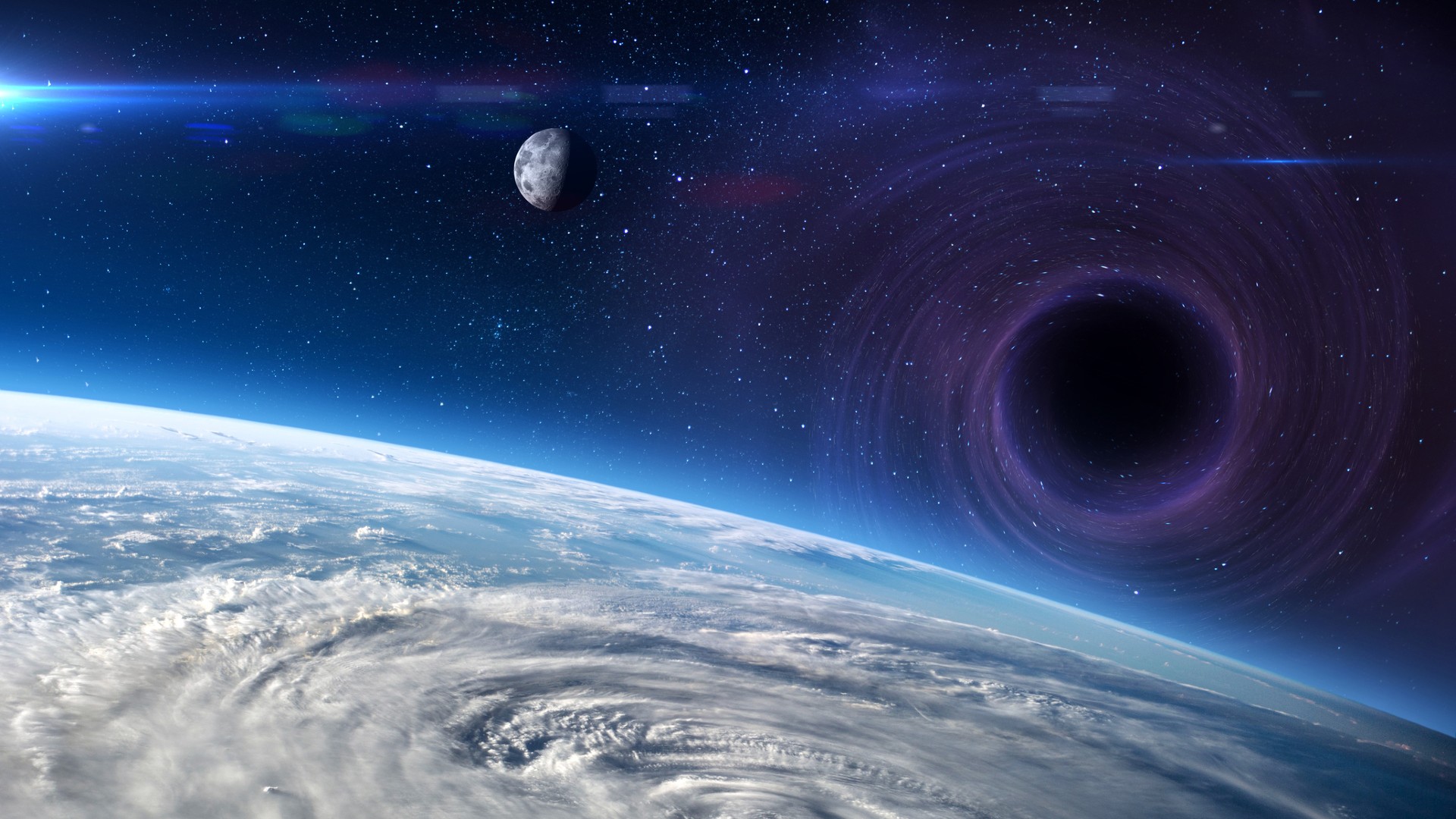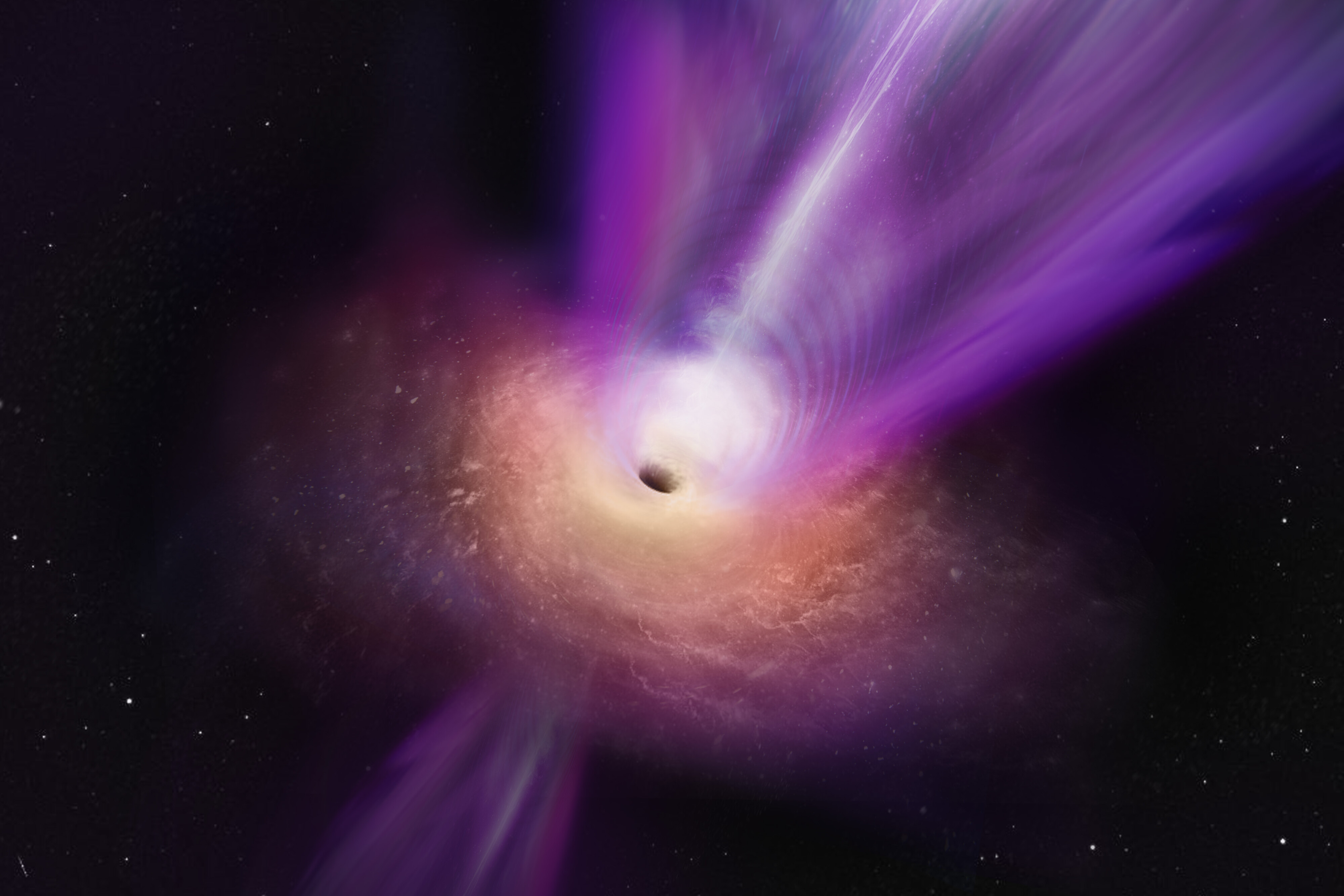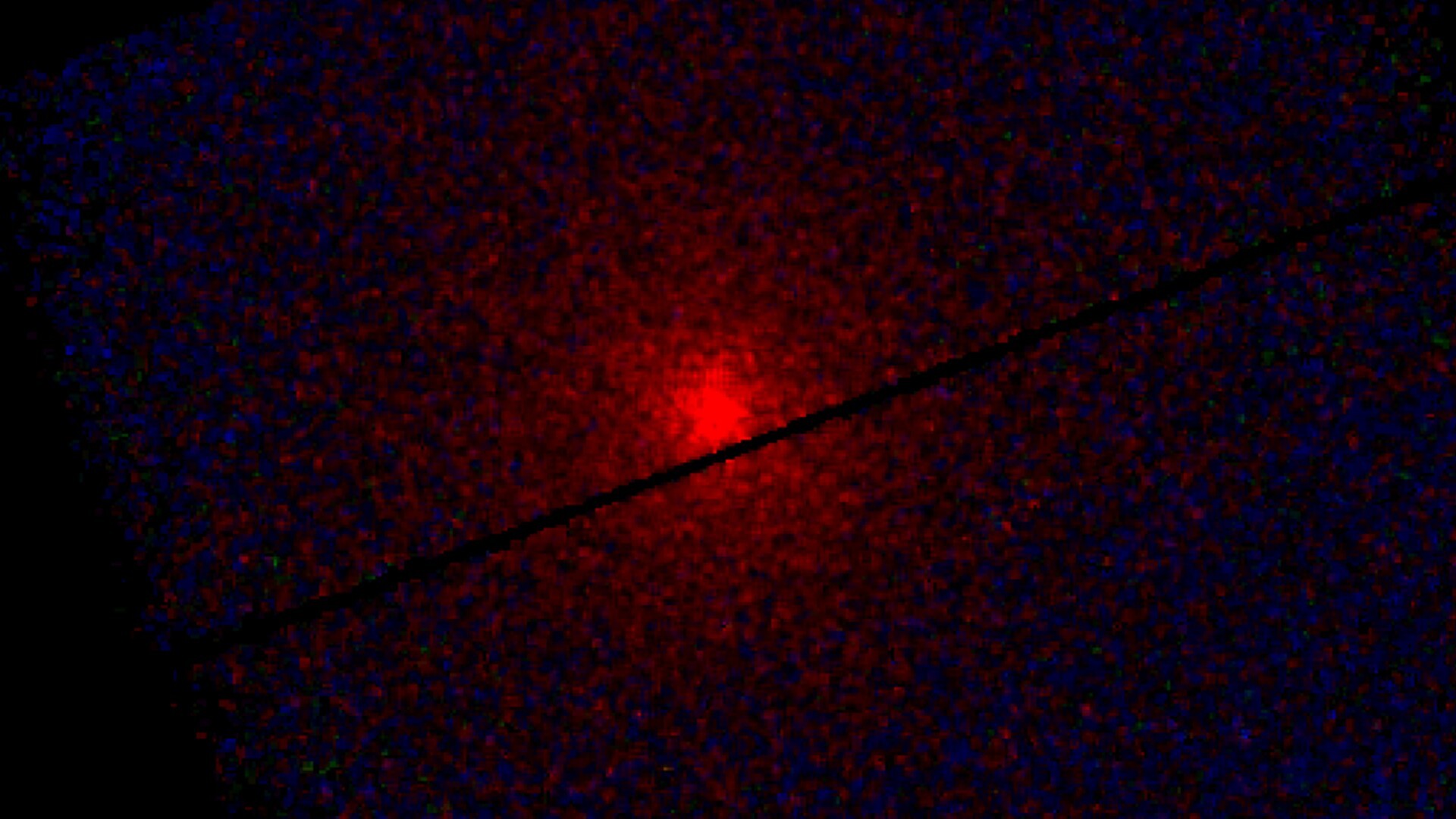A 'primordial' black hole may zoom through our solar system every decade
"If there are lots of black holes out there, some of them must surely pass through our backyard every now and then."

If microscopic black holes born a fraction of a second after the Big Bang exist, as some researchers suspect, then at least one may fly through the solar system per decade, generating tiny gravitational distortions that scientists can detect, a new study finds.
These findings suggest that if astronomers can discover and confirm the existence of such gravitational disruptions, they may be able to solve the mystery behind the nature of dark matter, the unseen material that many researchers suspect makes up about five-sixths of all matter in the cosmos.
Many researchers suggest that dark matter may be composed of unknown particles, but no experiment to date has discovered new particles that might be dark matter. As such, one alternative that scientists are exploring to explain dark matter are so-called primordial black holes, ones that have existed since the dawn of time.
Previous research suggests that about 86% of matter in the universe is composed of an essentially invisible substance called dark matter. Scientists infer dark matter's existence from its gravitational effects on everyday matter and light, but it currently remains uncertain what it might be made of.
Black holes get their name from their immense gravitational pulls, which are so powerful that not even light can escape. If a black hole does not give away its existence — for instance, by ripping apart a star — it may remain undetected against the black of space.
Over the decades, astronomers have detected many black holes, from stellar-mass black holes typically about five to 10 times the sun's mass to supermassive black holes millions to billions of solar masses in size. In contrast, the new study examined primordial black holes, which previous research suggests may only be about the mass of a typical asteroid — that is, about 110 billion to 110 million billion tons (100 billion to 100 million billion metric tons).
"The black holes we consider in our work are at least 10 billion times lighter than the sun, and are barely larger in size than a hydrogen atom," study co-author Sarah Geller, a theoretical physicist at the University of California at Santa Cruz, told Space.com.
Breaking space news, the latest updates on rocket launches, skywatching events and more!
Black holes arise when an object is so dense, it collapses under the strength of its own gravity. Prior work suggests that shortly after the Big Bang, before the universe expanded greatly in size, random fluctuations in the density of matter in the newborn cosmos led some clumps to get dense enough to form black holes.
Previous research suggested that primordial black holes that survived to the present day could make up most or all of dark matter. Based on this work, the new study examined how often primordial black holes might fly through the solar system, and whether they might produce effects that scientists could detect on visible objects.
"If there are lots of black holes out there, some of them must surely pass through our backyard every now and then," Geller said.
Originally the researchers "thought about what might happen if a black hole punched through Earth's crust, or passed through our atmosphere, or left a crater on the moon," Geller said. "We even asked ourselves what would happen if one of these tiny black holes hit a human."
However, "each of these ideas ran into the same problem," Geller explained. "A person, the moon, or even Earth is a very small target in the vastness of space, and the chances of a black hole ever hitting them directly is tiny."
Instead, "what we needed was a system large enough for black holes to pass by regularly, but precisely measured enough for us to be able to see some effect," Geller said. "That's when we started thinking about the very precisely measured orbits of objects in the solar system." In principle, a primordial black hole's gravitational pull "could produce wobbles in the orbits of objects in the solar system that are big enough for us to measure."
The scientists ended up focusing on primordial black holes flying near the inner planets of the solar system — Mercury, Venus, Earth and Mars. They found that if primordial black holes exist, they may be abundant enough for at least one to fly by the inner worlds once per decade. They added that several flybys may have already occurred since technologies capable of detection such perturbations have come online.
Geller cautioned that "we are not making any of the following claims — that primordial black holes definitely exist, that they make up most or all of the dark matter; or that they are definitely here in our solar system." Instead, they say that if primordial black holes exist and make up most of dark matter, "then one must travel through the inner solar system every one to 10 years."
The scientists also noted that their findings are based on relatively simple computer simulations that do not have the precision needed to analyze real data concerning inner solar system orbits.
"To make definitive statements, we'll need to work with colleagues who specialize in modeling the solar system with much more sophisticated computational methods," study co-author Benjamin Lehmann, a theoretical physicist at MIT, told Space.com. He added that they also need to pinpoint how to figure out what might be a real signal of a primordial black hole and what might simply fall into the range of error expected from any measurement.
The scientists are now discussing the possibility of collaborating with the solar system simulation group at the Paris Observatory to analyze existing orbital data. "They are some of the foremost experts on the sophisticated simulation methods that will be needed to make this analysis a reality," Lehmann said. "Once we develop a complete model that can be used to search through real data, then we'll have to investigate what follow-up observations will be most appropriate for any signal that we might register."
This approach of looking for primordial black holes via their gravitational effects is "not completely sufficient to distinguish between a primordial black hole and some other unusual object of a similar mass," Geller cautioned. She noted that if this strategy does detect a potential primordial black hole, "we can trigger follow-up observations to rule out other possibilities. Astronomers are in fact amazingly good at finding even much lighter objects in our solar system, such as small asteroids, whereas direct observation of a small black hole with a telescope would most likely show nothing at all."
The scientists detailed their findings Sept. 17 in the journal Physical Review D.

Charles Q. Choi is a contributing writer for Space.com and Live Science. He covers all things human origins and astronomy as well as physics, animals and general science topics. Charles has a Master of Arts degree from the University of Missouri-Columbia, School of Journalism and a Bachelor of Arts degree from the University of South Florida. Charles has visited every continent on Earth, drinking rancid yak butter tea in Lhasa, snorkeling with sea lions in the Galapagos and even climbing an iceberg in Antarctica. Visit him at http://www.sciwriter.us

